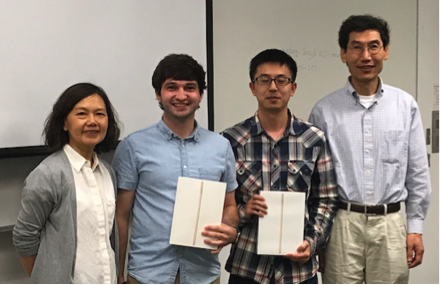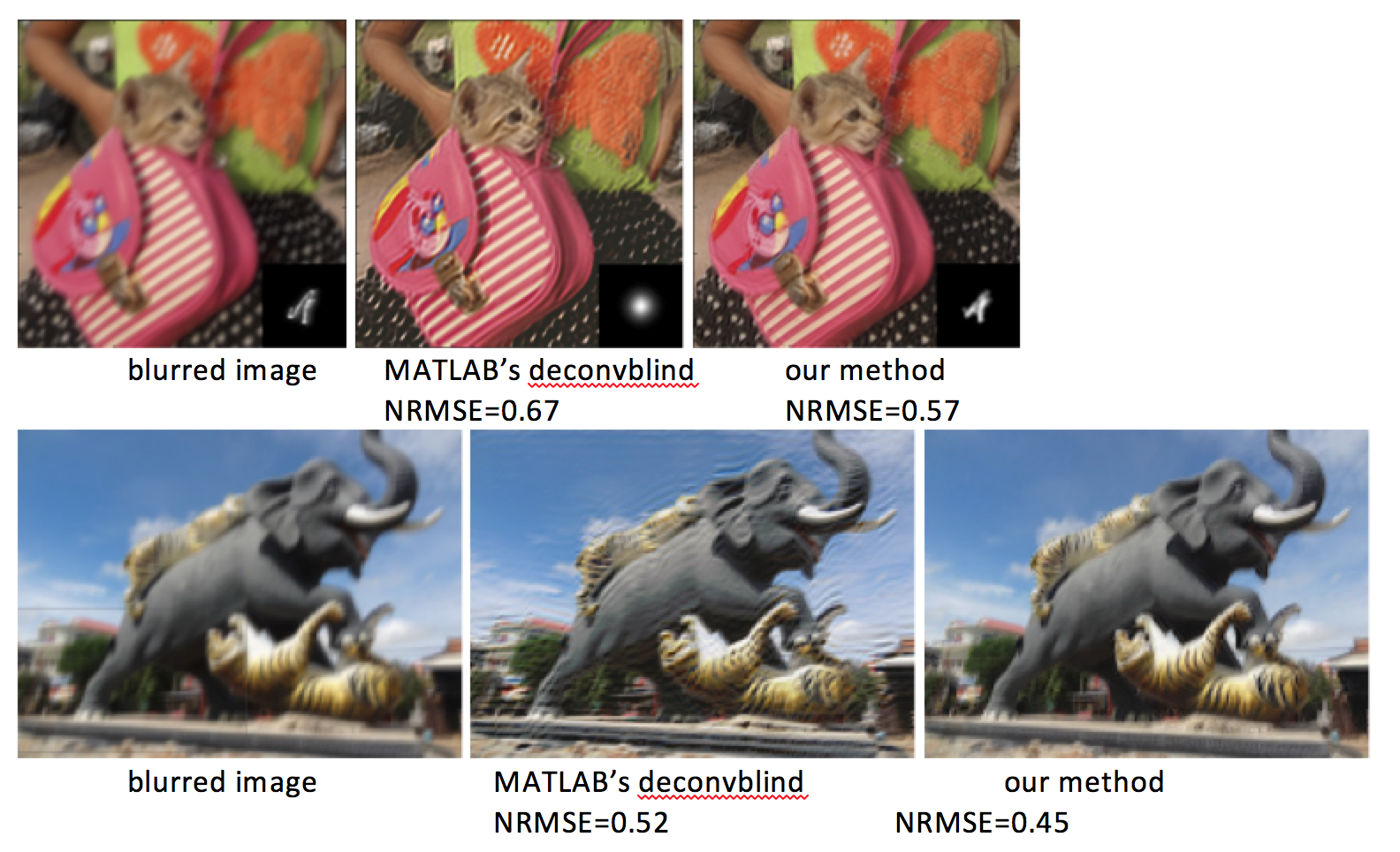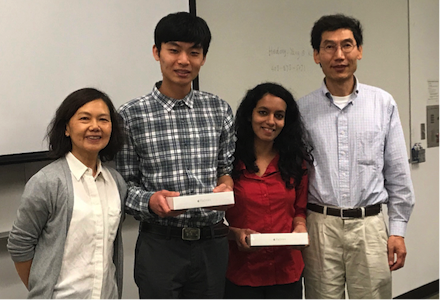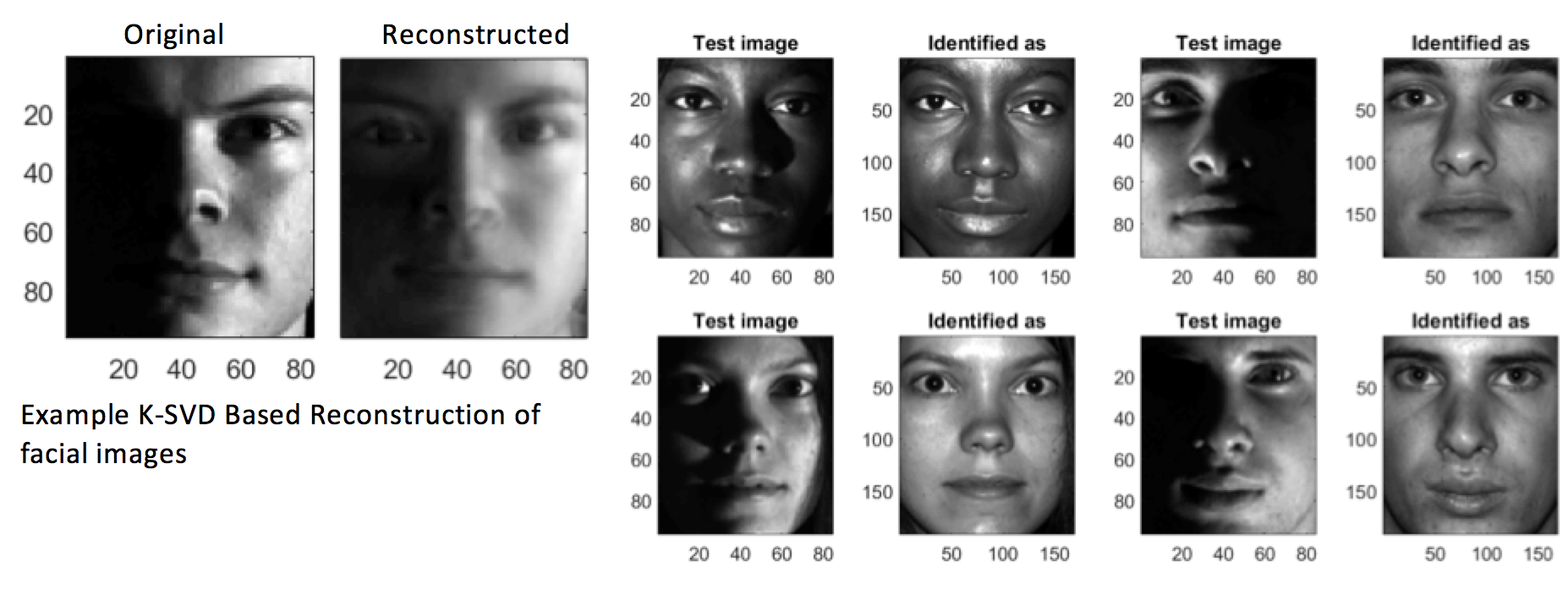Students in EECS 556 win prizes for improving image processing techniques for camera motion blur and facial recognition
These students are learning to improve images in medical imaging, and improve facial recognition
Two teams earned prizes in the graduate level course, EECS 556: Image Processing, thanks to the sponsorship of KLA-Tencor. The course, taught this past term by Prof. Boklye Kim (Radiology, EECS), covers topics in the theory of multidimensional signal analysis and processing with applications in optical, computerized tomography (CT), and magnetic resonance images. The student project presentations were judged and awarded by Dr. Hedong Yang, Principal Engineer at KLA-Tencor.
First place
Blind Deconvolution of Camera-shake Motion Blur
Cameron Blocker, Gong Cheng

 Enlarge
Enlarge
Motion blur caused by camera shake is a common issue for everyday photography, but removing such blur is challenging due to a lack of information in image files. This type of problem is called “blind deconvolution.”
This team’s project implements and extends an advanced blind deconvolution method that can handle large and complicated blur kernels using a spatial gradient prior and variational Bayesian approach. The algorithm gives better results with significantly fewer artifacts than a widely-used traditional method.

 Enlarge
Enlarge
Second place
Face Recognition via Dictionary-Based Sparse Image Representation
Xianglong Wang, Tejaswi Worlikar

 Enlarge
Enlarge
Facial recognition has garnered wide interest thanks to its diverse real-world applications, especially in security and entertainment. Traditional algorithms using feature detection and region matching have limited robustness and low accuracy.
This project proposes an improved sparse representation-based classification (SRC) method by adapting a dictionary learning algorithm for creating sparse representations called K-SVD. This alogrithm is used widely image processing, audio processing, biology, and document analysis. The team then used a linear classifier for recognition.

 Enlarge
Enlarge